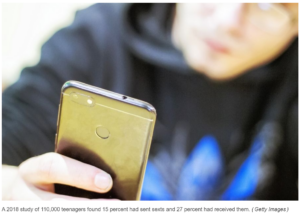Hay cinco fuentes principales en las que los alumnos pueden aprender sobre salud sexual y drogas: la escuela, los amigos, la familia, los medios de comunicación y su entorno. Muchas escuelas ofrecen programas centrados en estos importantes temas, lo que permite a los estudiantes tener acceso a información de fuentes fiables. Recientemente, debido a la pandemia de Covid-19, más estudiantes han estado aprendiendo a través de clases en línea y aprendizaje a distancia. Estos tiempos sin precedentes son difíciles tanto para los estudiantes como para los educadores, ya que han tenido que navegar por el aprendizaje y la enseñanza en entornos diferentes a los que están acostumbrados. La primavera pasada, muchos distritos redujeron el alcance de los planes de estudios para centrarse en las materias académicas básicas, recortando a menudo contenidos como la educación sexual y sobre drogas.
![]()
 Aunque los estudiantes han pasado más tiempo en casa, el tiempo no se ha detenido. Debemos recordar que estos jóvenes siguen creciendo física y socialmente y que siguen teniendo curiosidad y preguntas. También siguen recibiendo influencias externas, aunque pasen más tiempo en casa. Un adolescente ve alrededor de 3.000 anuncios al día, ya sea en Internet, la televisión, la radio, etcétera. Es de suponer que estar en casa más tiempo de lo normal significa que estos jóvenes están expuestos a aún más anuncios o mensajes sobre sexo y drogas con tanto tiempo que pasan conectados, especialmente con aplicaciones populares como Tik Tok. Con la cantidad de tiempo dedicado al trabajo y al juego en ordenadores y otros aparatos electrónicos para actividades escolares y recreativas, los estudiantes tienen mayor acceso no sólo a anuncios, sino también a medios sexualmente explícitos o mayor capacidad para participar en sexting y otros comportamientos en línea.
Aunque los estudiantes han pasado más tiempo en casa, el tiempo no se ha detenido. Debemos recordar que estos jóvenes siguen creciendo física y socialmente y que siguen teniendo curiosidad y preguntas. También siguen recibiendo influencias externas, aunque pasen más tiempo en casa. Un adolescente ve alrededor de 3.000 anuncios al día, ya sea en Internet, la televisión, la radio, etcétera. Es de suponer que estar en casa más tiempo de lo normal significa que estos jóvenes están expuestos a aún más anuncios o mensajes sobre sexo y drogas con tanto tiempo que pasan conectados, especialmente con aplicaciones populares como Tik Tok. Con la cantidad de tiempo dedicado al trabajo y al juego en ordenadores y otros aparatos electrónicos para actividades escolares y recreativas, los estudiantes tienen mayor acceso no sólo a anuncios, sino también a medios sexualmente explícitos o mayor capacidad para participar en sexting y otros comportamientos en línea.
Con esta mayor exposición, se podría argumentar que temas como la educación sexual son más importantes que nunca. De hecho, en lo que respecta al comportamiento sexual en línea, 1 de cada 7 adolescentes ha declarado haber enviado un mensaje de texto, mientras que 1 de cada 4 ha declarado haberlo recibido. Además, 12% de los adolescentes que recibieron un sext lo reenviaron a otras personas sin el permiso del remitente. Estas estadísticas pueden parecer desalentadoras; el sexting parece estar convirtiéndose en una tendencia más normal entre la gente, incluidos los adolescentes, y con la capacidad de esconderse detrás de una pantalla, la sextorsión está en aumento. El FBI define la sextorsión como "un delito grave que se produce cuando alguien amenaza con distribuir material privado y sensible si [la persona no] le proporciona imágenes de naturaleza sexual, favores sexuales o dinero". Por lo tanto, es vital que los jóvenes aprendan acerca de los comportamientos sexuales y sus posibles consecuencias, incluso si los comportamientos no implican contacto físico con otra persona.
Debido a la situación actual del mundo, muchos padres y tutores han tenido que asumir el papel de profesores para complementar lo que las escuelas pueden ofrecer en línea. Esto significa que estos adultos deben abordar con sus jóvenes, más que antes, temas como las matemáticas, las ciencias, la lectura y otros difíciles como el sexo y las drogas. Estas conversaciones pueden resultar agotadoras o enojosas, pero es importante mantener una comunicación abierta e indicar a los alumnos información precisa y fiable. Estos temas son urgentes y deben seguir tratándose. Averigüe si la escuela de su hijo sigue ofreciendo estos temas y, si no es así, edúquese para empezar a mantener conversaciones continuas con él. He aquí algunos recursos fiables que le ayudarán en este tipo de conversaciones: kidshealth.org, amaze.org, drugabuse.org (NIDA) y candorhealthed.org.
 Escrito por: Rachel Simmons-Educadora sanitaria, Candor Health Education
Escrito por: Rachel Simmons-Educadora sanitaria, Candor Health Education
